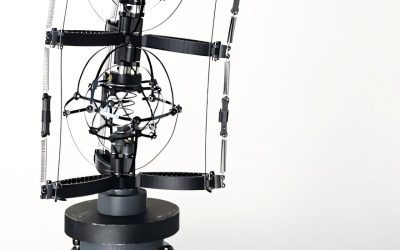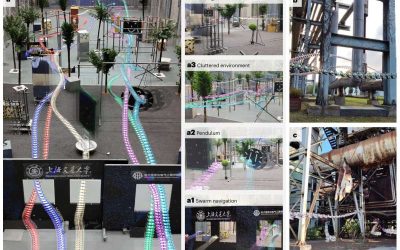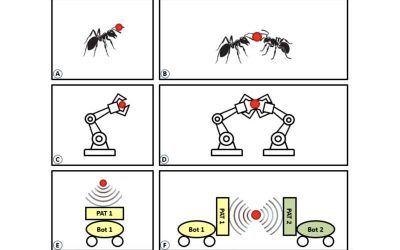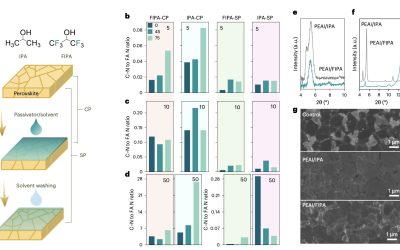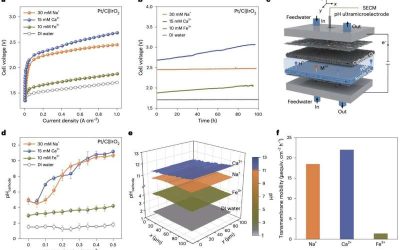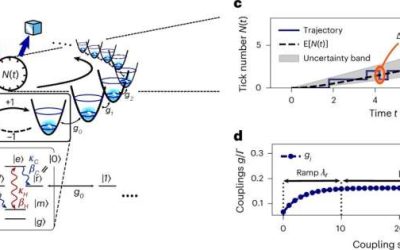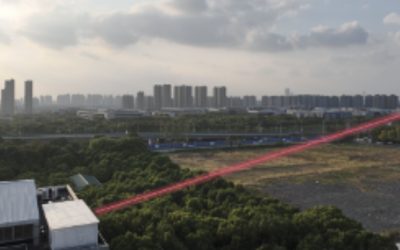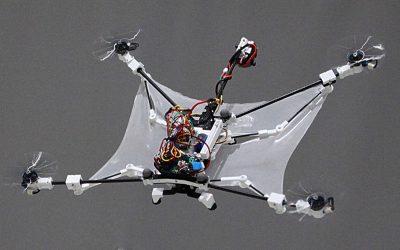Two-dimensional (2D) semiconductors, materials that can conduct electricity and are only a few atoms thick, are promising alternatives to the conventional silicon-based semiconductors currently used to fabricate many electronics. Despite their promise, these materials...
Engineering
New scrubbing robot could contribute to automation of household chores
While the advent of robotic systems that can complete household chores has been widely anticipated, those commercially released so far are primarily robot vacuums that autonomously clean the floor. In contrast, robots that can reliably clean surfaces, tidy up, cook or...
New approach allows drone swarms to autonomously navigate complex environments at high speed
Unmanned aerial vehicles (UAVs), commonly known as drones, are now widely used worldwide to tackle various real-world tasks, including filming videos for various purposes, monitoring crops or other environments from above, assessing disaster zones, and conducting...
New system allows acoustic robots to co-operatively transport objects
While so far robots have predominantly been deployed individually, as teams, they can tackle a wider range of complex missions with remarkable speed and efficiency. For instance, they could help to rapidly transport objects to target locations, moving on varying...
New passivation strategy improves scalability and efficiency of perovskite solar cells
Solar cells, devices that can convert sunlight into electrical energy, are becoming increasingly widespread, with many households and industries worldwide now relying on them as a source of electricity. While crystalline silicon-based photovoltaics and other widely...
Turning tap water into hydrogen: New strategy lets PEM electrolyzers use impure water
In recent years, energy engineers have been working on a wide range of technologies that could help to generate and store electrical power more sustainably. These include electrolyzers, devices that could use electricity sourced via photovoltaics, wind turbines or...
A framework for realizing a microscopic, highly precise and energy-efficient quantum clock
Over the past decades, physicists have been trying to develop increasingly sophisticated and precise clocks to reliably measure the duration of physical processes that unfold over very short periods of time, helping to validate various theoretical predictions. These...
An active optical intensity interferometry scheme enables synthetic aperture imaging from over a kilometer away
Intensity interferometry is a promising technique that enables the precise measurement of spatial properties (i.e., distances, shapes and light properties) by probing fluctuations in the intensity (i.e., brightness) of light, as opposed to the exact timing and phase...
A new strategy to fabricate highly performing thin-film tin perovskite transistors
Tin-halide perovskites, a class of tin-based materials with a characteristic crystal structure that resembles that of the compound calcium titanate, could be promising alternatives to commonly used semiconductors. Past studies have explored the possibility of using...
Flying squirrel-inspired drone with foldable wings demonstrates high maneuverability
Unmanned aerial vehicles (UAVs), commonly known as drones, have already proved to be valuable tools for a wide range of applications, ranging from film and entertainment production to defense and security, agriculture, logistics, construction and environmental...


